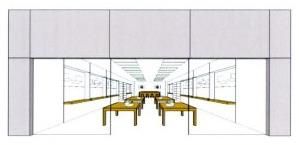In a decision which will be welcomed by global retailers and franchisors, the Court of Justice of the European Union (CJEU) ruled on 10 July 2014 that a retail store design may - subject to certain conditions - be registered as a trade mark. The decision is a significant win for Apple Inc., who had sought to register its distinctive store design as a trade mark in the European Union. However, the decision also paves the way for a variety of others - such as franchisors, retailers, hoteliers, restaurateurs and professional services firms who operate from premises using a unique design which is not simply functional. These designs clearly may be registered as trade marks in future. Registration has advantages (for example, over the laws of passing off) when seeking to protect and enforce the intellectual property rights in the "get-up" or "look-and-feel" of a company. Below we discuss in detail the implications of the case.
The background facts
In 2010, Apple successfully registered with the United States Patent and Trademark Office the following three-dimensional trade mark which consisted of a multi-coloured design representation of its flagship store:

This was registered for services consisting of 'retail store services featuring computers, computer software, computer peripherals, mobile phones, consumer electronics and related accessories and demonstrations of products relating thereto'.
Apple then tried to extend this trade mark globally,1 including for registration in Germany. However, the German Patent and Trademark Office ("DPMA") refused the application on the basis that consumers would not consider the design as a badge of commercial origin (which is a function of a trade mark). The DPMA also thought the design was not sufficiently distinguishable from other stores providing electronic products - particularly when the trade mark applied for did not contain any indication as to the size and proportions of the retail store. Apple appealed to the German Federal Patent Court, which thought that Apple's layout had features which distinguished it from other retail stores. Nevertheless, before reaching its final decision, the German Federal Patent Court decided to seek clarification from the CJEU on a number of questions of interpretation of the Trade Mark Directive.2
CJEU confirms store designs can be registered as a trade mark in the EU
The CJEU3 then considered the three criteria for trade mark registration under Article 2 of the Trade Mark Directive, namely:
- the trade mark must be a sign;
- it must be capable of graphic representation; and
- it must be capable of distinguishing the "goods" or "services".
The CJEU held that the Apple retail store layout satisfied these criteria for an establishment where Apple services were to be provided (being Apple's applications, demonstrations and seminars) and thought that it was unnecessary for the trade mark application to indicate the size or proportions of the store. The CJEU considered the trade mark was capable of distinguishing Apple services from other retailers' services so long as there was none of the usual grounds for refusing registration. The case has been remitted back to the German Federal Patent Court for its final decision on the facts.
Implications for retailers, franchisors and others with distinctive premises
In summary, the Apple decision does not stand for any new principles of trade mark law. Rather, the CJEU has merely confirmed that a design for a retail store layout can, in principle, be registered as a trade mark. The case is of interest though as it is the first time that the registration of a store layout as a trade mark has been approved in principle by the CJEU.
In our view, the case is not a landmark case, but a decision which paves the way. It will be of interest to anyone who has a sufficiently distinctive get-up (store colours and the look-and-feel) for premises or a store design. Thus, it will be of greatest relevance to retailers, hoteliers, restaurateurs, fast food outlets, franchisors and other professional services firms. If the premises design is distinctive rather than merely functional of the services on offer, then it may be registered as a trade mark. Once registered as a trade mark, the trade mark owner can enforce its trade mark rights against competitors (or former franchisees or licensees) who wish to copy the format. When taking action against your copycat, relying on trade mark rights can be a far easier route than relying on the complex laws of passing off which can provide a less certain result.
Footnotes
1. Under the Madrid Agreement concerning the International Registration of Marks.
2. Directive 2008/95 of the European Parliament and of the Council of 22 October 2008 to approximate the laws of the Member States relating to trade marks.
3. Case C 421/13, Apple Inc. v Deutsches Patent- und Markenamt.
The content of this article is intended to provide a general guide to the subject matter. Specialist advice should be sought about your specific circumstances.


